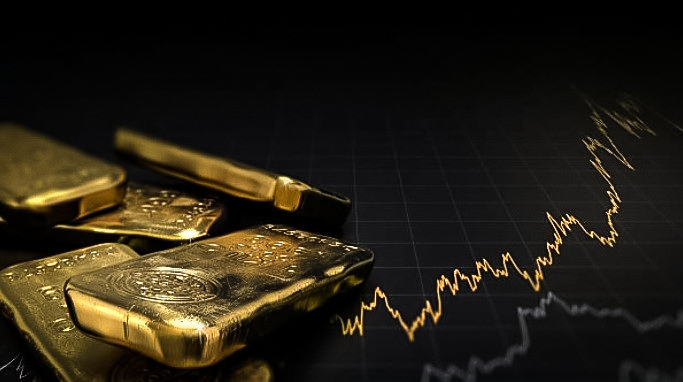prices | gold | investment

It's wedding season in Nepal, a time when families of the bride and groom traditionally invest heavily in gold ornaments. However, the yellow metal that has been hitting new price records is making buyers nervous.
A tola of gold, which is equivalent to 11.66 grams, was Rs 78,000 on 1st March 2020 — just 10 days before the World Health Organization declared COVID-19 a pandemic — now costs almost Rs 110,000.
So what has caused the gold prices to hit the roof?
First, the international reasons.
Gold is considered a safe haven for investment and a hedge against inflation. Its value stems from various functions such as — a monetary instrument (though not entirely equivalent to paper currency), a financial asset and a raw material for jewelry and decorative items. Additionally, gold’s value usually remains unaffected by government interest rate policies.
For all these reasons, investors throng to gold when economic uncertainties arise or market slumps for reasons such as recession, geopolitical strains and financial instability.
For example, the uncertainty surrounding COVID-19 drove the price of gold to a peak of Rs 103,500 per tola on August 7, 2020, marking the first time it surpassed the six-digit threshold in the domestic market. However, by March 2021, the price had fallen to Rs 85,600 per tola.
In recent times, with the collapse of Silicon Valley Bank and Signature Bank in the US and the news of the Swiss bank Credit Suisse bailed out by Swiss financial giant UBS, investors are once again taking the safety flight to gold driving its demand and price. The price hit Rs 106,300 on 24th January rising to Rs 109,200 on 31st March.
Prior to this, the Russia-Ukraine conflict and rising inflation in the global economy already had a significant price effect.
Some market watchers believe the price of gold will continue to grow over the next months.
Now, the domestic factors.
Gold is one of the key import commodities in Nepal, following petroleum products, machinery and parts, transport equipment, vehicles, and spare parts. According to data from the Nepal Rastra Bank (NRB) for the first seven months of the current fiscal year, gold accounted for 3.4% of total imports.
The final figures presented here include the sum of i) Gold, ii) Other unwrought gold, and iii) Gold and jewelry of Gold, including parts, as categorized in the Department of Customs dataset | Source: Department of Customs
The gold import accounted for Rs 43.68 billion in the fiscal year 2021/22, which has already reached Rs 36.90 billion by the eight months of the ongoing fiscal year.
On every 10 grams of gold imported, the government levies a custom duty of Rs 8,500 — generating a significant chunk of revenue for the national treasury.
However, as the burgeoning import has implications for the country's foreign exchange reserves, the central bank adjusts the daily gold import quota when forex reserves nears critical levels. In April 2020, the Nepal Rastra Bank (NRB) cut the daily gold import quota from 20 kg to 10 kg. However, in April 2021, the quota was restored to 20 kg to meet the rising demand for gold.
The daily gold price is set by the Federation of Nepal Gold and Silver Dealers Association based on international market price fluctuations and other variables.
Gold prices are also affected by exchange rates — meaning every time the Nepali currency devalues against the US dollar, it takes more rupees to buy gold, which in turn increases the price of gold.
Read More Stories
Kathmandu’s decay: From glorious past to ominous future
Kathmandu: The legend and the legacy Legend about Kathmandus evolution holds that the...
Kathmandu - A crumbling valley!
Valleys and cities should be young, vibrant, inspiring and full of hopes with...
Understanding federal grants in fiscal federalism
Local budgets are where democracy meets the daily lives of citizensthis is a...